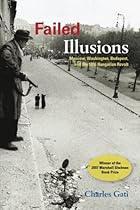

Written in 1906 by a future philosopher; curator and Zen teacher; this book; which was intended to be read aloud in a famous salon; interweaves the history of tea with Japanese society. It also contains essays on spirituality; poetry and art.
#611770 in Books Stanford University Press 2008-02-06Original language:EnglishPDF # 1 9.00 x .70 x 6.00l; 1.01 #File Name: 0804759642280 pages
Review
5 of 6 people found the following review helpful. The Fate of All IllusionsBy R. L. Huff- so Hungary's fate in '56 should come as no real surprise. Gati has done a good job in reassessing the course of a pivotal cold war event; and fleshed out the narrative through incorporating new documentation and memoirs. In this regard; however; there is really little that is new to add over an uprising scholars have steadily picked to the bone for half a century.Gati's real contribution here is his Rashomon-like critique of the revolution and of its five main protagonists: Americans; Soviets; Hungarian Communists; insurgents - and Imre Nagy; caught between the latter three. The US illusion was its belief that; since it could not start World War Three over a Soviet satellite; inciting rhetoric was its only sufficient recourse rather than pragmatic realpolitik. The Soviet illusion; and that of its Hungarian allies; lay in Moscow's belief that the uncorked; anti-Stalinist genie could be stuffed back in the vodka bottle. Nagy's illusion - and that of the reformist intellectuals around him - was that he and Moscow spoke a common political language that could open serious dialogue. And the insurgents' illusion lay in their faith that; not only could they overturn the "Communist regime;" but that Moscow would morally capitulate as the Free World rushed to aid Hungary's struggle.Gati takes apart all these; but then concludes that the revolution's failure was not inevitable after all. One must ask why not; after he has spent so much time marshaling evidence of this rampant political blindness. As an American reader; the most interesting part to me was his analysis of American actions and motives. The tantalizing remark of Richard Nixon's; that it would be very convenient for the '56 presidential race if the Soviets pulled some brutality in Eastern Europe; coupled with RFE's inflammatory broadcasts soon after; suggest a cynical collusion that - given what we know about CIA black operations of the period - isn't as farfetched as some might wish to believe. The US; for its part; behaved as it did because - like the USSR - it was led by unimaginative men stuffed just as full of illusions of their own. (Witness their equally confused; floundering handling of the Cuban Revolution a mere two years later.)The final illusion to fail; if one reads Gati correctly; is his: namely; his young man's belief that a democratic socialism with a human face could ever have arisen out of the Stalinist muck in which it was planted. Of course; this did eventually arise after 1985 - too late to save the system after three decades more of accumulating rot. Perhaps the chief criticism to be made of Gati's account is his expectation that those caught up in the passions of '56 could display the maturity and insight he's gained fifty years after the event. That is surely the chief failed illusion of all armchair historical analysis.6 of 7 people found the following review helpful. Excellent analysis of the Hungarian-Soviet-Western interactionBy John F. RyanGati's book is written with the perspective of the forces at work in Budapest; Moscow and Washington before and during the 1956 Hungarian Revolution. He briefly recounts his own experience as a young Hungarian journalist during the 12 days of the Revolution; and then proceeds to profile in detail the events and personalities of that time. He manages to capture the spontaneity of the event; and how leaders in the three capitals misinterpreted and finally acted (or failed to act); often with limited understanding. The book is well-researched (almost every page has footnotes); and despite criticism by an earlier commenter; is quite in line with more recent interpretations of the 1956 events; using recently released Soviet; American and Hungarian archives; which were not available to earlier authors. As it has been mentioned by another reviewer; it is a human story; not an encyclopedic one; and I found it engrossing.0 of 1 people found the following review helpful. Good Book; the Book taught me a different way ...By J. lorenzoGood Book ; the Book taught me a different way to see the Hungarian Revolution; it talks about the mistakes commited by all the participants in this drama getting the final result that the Revolution could have achieved more if the aspirations and demands would have been less.Also the author tells about the political actors some of whom were not very clever or became leaders of the revolution by surprise. the author gives You the qualities and flaws of Imre Nagy.I liked a lot what the autor says about the role of Radio Free Europe in the conflict and I never had thought about the consequences of their broadcasts.